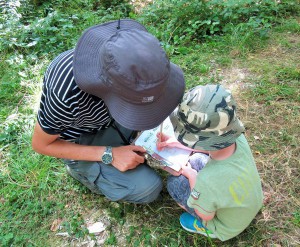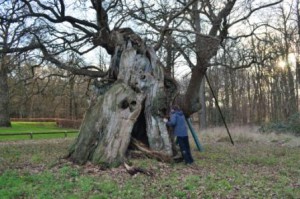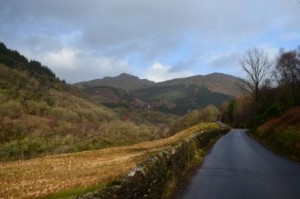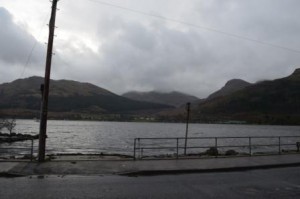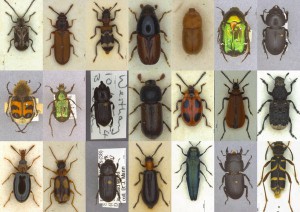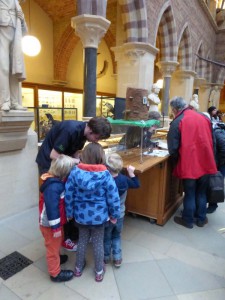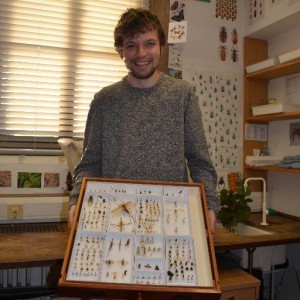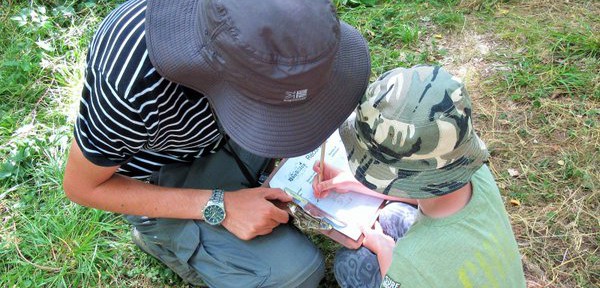
Hello there, my name is Ryan Clark. I am this years Entomology Natural Talent trainee, based in Peterborough with Natural England and Buglife. My traineeship is kindly funded by the Esmee Fairbairn Foundation. I started just over a month ago now and through this blog post hope to tell you about the exciting things I have been up to this month.
About Me
I would firstly like to introduce myself. I am 22 years old and have grown up in Buckinghamshire, on the outskirts of the Chiltern hills. This habitat has shaped me into the wildlife enthusiast that I am today. I am yet to find a group of organisms in Britain that doesn’t fascinate me and love recording every species that I come across. I also love taxonomy and get a real kick out of identifying every species I see, which is just under 2000 species so far.
I am also keen on encouraging others, especially young people, to engage with and love the natural world as much as I do. I do this mainly through my personal blog and Twitter feed which includes my photography and writing. I am also the membership coordinator for a group called A Focus on Nature, which brings together naturalists under the age of 30, and acts like a big family. I am also the youngest person to sit on the Meetings and Communication Committee for the Botanical Society of Britain and Ireland. I see my role here as advising the society on ways to engage more with younger people through their communications and events.
Saproxylic Invertebrates
One of my main focus areas for this year will be Saproxylic invertebrates, but what are they? Saproxylic invertebrates depend on dead or decaying wood for at least part of their life cycle. It is often the larvae of a species that depend on this dead wood in order for them to develop, and there are thousands of saproxylic species in Britain including beetles, flies, bees etc. This not only includes species feeding on the wood itself, but also the predators and parasites that depend on them. So why am I focusing on them? Well quite simply, dead wood matters! It is said that a 1/3 of a decent woodland or parkland should be made up of fallen or standing dead wood. But this is often not the case, and many species that depend on the dead wood of really ancient trees, are very scarce and often overlooked in conservation measures.
Week 1 – Week Commencing 25th Jan
This was the induction week for my traineeship, and took place in Scotland! I couldn’t believe my luck when I found out the first week would be based here. I haven’t been to Scotland since I was 3 years old and have always wanted to go back there. My week included:
- Meeting the 5 other Natural Talent trainees and the 19 Natural Networks trainees. Natural Networks is a traineeship program that focuses on increasing the biodiversity of local greenspaces to play a role within ecological networks
- A trip to the Argyll to plant trees up a mountain… yes you read that right! This was one of the most physically challenging conservation tasks I have ever done. The weather was changing by the second and the terrain was tricky to say the least. I feel it will also be one of the most rewarding things I have done though, when I go back again and hopefully see golden eagles nesting in the trees we planted
- Lots of training on risk assessments, project planning, lone working safety, construction safety and citizen science engagement
After this week, I knew my traineeship was going to be an amazing experience. I met lots of lovely people and am excited about the difference we can all make to conservation this year and the wonderful places these traineeships will take us.
Weeks 2 and 3 – Week Commencing 1st February and 15th February
It was time for my first week with Natural England and Buglife , I have never been so simultaneously nervous, but excited at the same time. The nerves soon subsided as I met lots of friendly people who share the same passions as me, conserving the wonderful wildlife that we are lucky to have in Britain. These two weeks were mainly spent settling in to both of my placement providers offices and ways of working. Natural England is a government organisation and is very different from Buglife, a wildlife charity. This means I get to experience both and decide which path I would rather take in the future.
I also spend a lot of time getting to grips with dead wood including the fauna and flora associated with it, and the process of decay. Dead wood could not be more alive and I am really starting to like this habitat.
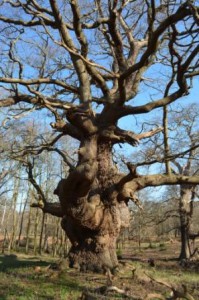
This tree is hundreds of years old and still going strong. It has sections of dead wood which will probably supported thousands of invertebrates of hundreds of species before it decays completely and the nutrients are returned to the soil.
I have also been getting involved with some projects with my placement providers including some work on pollinators (a real passion of mine) with Buglife and Pantheon with Natural England. Pantheon is a system which analyses invertebrate species assemblages. I am a big believer in the fact that a list of species on a site is often of little use to many site managers, but this Pantheon system will highlight the important invertebrate features of a site to site managers and highlight important species. I look forward to continue working on many projects like that this year!
Week 4 – Week Commencing 15th February
This week was spent at the Oxford University Museum of Natural History with Ceri Watkins, a TCV Natural Talent trainee that is coming to the end of her traineeship on Saproxylic invertebrates. This was a fascinating week which really helped me to start to get to grips with identifying dead wood beetles. My week included:
- Looking at the collections at the museum – these collections are essential for us to study and ultimately conserve species
- Learning how to pin, stage mount, card and dissect beetles – many species cannot be confidently identified without microscopic identification
- A trip to Wytham Woods to look at the dead wood habits there and learn about the range of sampling techniques for saproxylic beetles
- Learning how to use a photostacking microscope, this takes a series of photos of a specimen and stitches them together to produce a high quality photo. This is used to digitise the collections and for engagement purposes.
- Speaking to the public during an outreach event called ‘Spotlight Specimens’. Myself and Ceri were doing a show and tell session on stag beetles and other dead wood invertebrates. This was a real hit with children.
All in all this was a great week and I would like to thank Ceri and Darren Mann (head of life collections) for hosting me.
What Next?
In the next few weeks I will be visiting Windsor to look at their dead wood habitats there, and coming up with ideas for my own project. Keep an eye on this blog and follow Natural Talent and myself on Twitter for updates!

